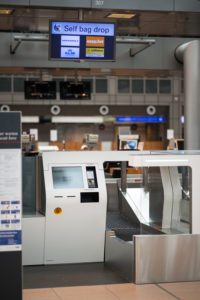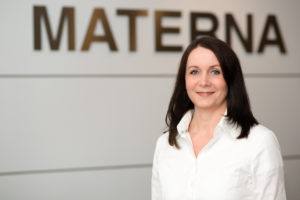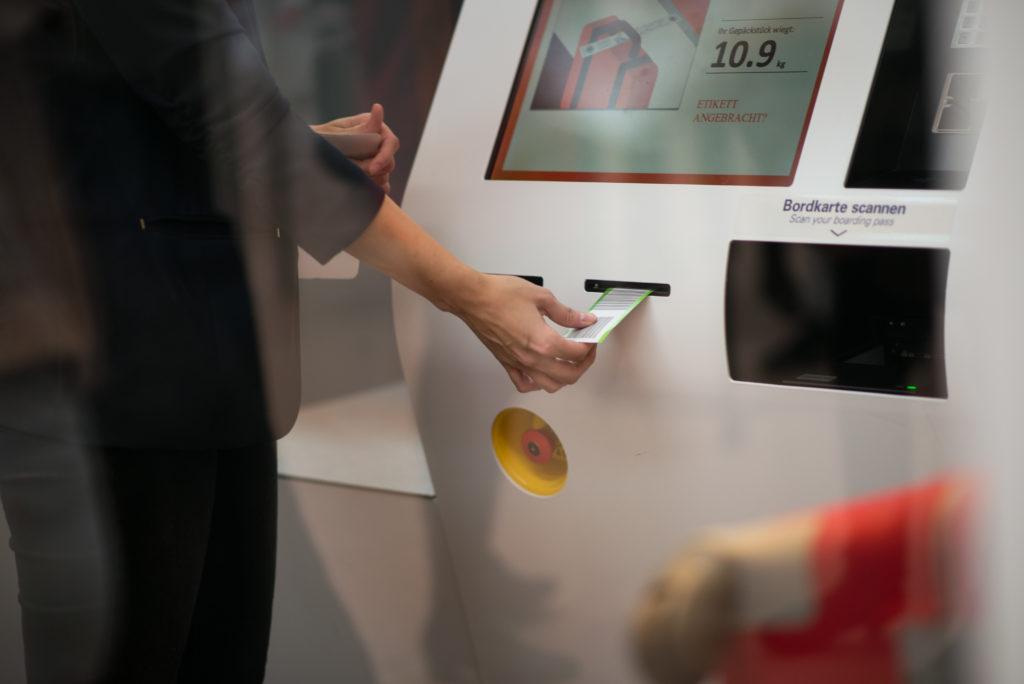Jana Eull, senior marketing manager at Materna, which will be exhibiting at Passenger Terminal Expo and recently installed a number of self-bag drop kiosks at Montréal-Trudeau Airport, highlights the reasons behind the continued trend for self-service technology at airports
Why is self service seeing such growth?
Airlines and airports have to offer the best service and comfort to their passengers, but at the same time save costs to stay competitive. As terminal space is limited, airports have to find options for smooth and quick passenger handling. With self-service solutions, they can speed-up certain processes such as check-in and baggage drop-off. Thanks to common-use software, airlines are able to share hardware systems like check-in and self-bag drop machines. This increases efficiency enormously. Pre-security and boarding processes will also increasingly be automated for improved passenger flow. Airports and airlines benefit from new self-service solutions and optimized workforce scheduling as airline staff can concentrate on passengers who need assistance. Peak hours can be better addressed because the systems can be used independently of counter opening times.
What are some common mistakes to avoid regarding self-service solutions?
It is very important to get a clear understanding of all relevant stakeholder requirements. These extend far beyond airline baggage rules and size and weight restrictions. Baggage types, passenger security and risk of misuse or damage to luggage or self-service units, as well as staff requirements, and coordination with other equipment, have to be considered. The overall look and feel of a self-service experience is also an important consideration. Everything needs to fit together before airports and airlines move into the installation phase. It is essential to reconcile all these factors in order to avoid problems and disappointments further down the line.
Can you give an example of how your technology has helped improve passenger flow?
 Depending on the specific solution and whether a one- or two-step process is offered, process times for self-service bag drop have been reduced to a minimum of seconds. Where passengers had to stand in lines before, they now use simple and intuitive systems to just scan their bag tags and drop-off their luggage.
Depending on the specific solution and whether a one- or two-step process is offered, process times for self-service bag drop have been reduced to a minimum of seconds. Where passengers had to stand in lines before, they now use simple and intuitive systems to just scan their bag tags and drop-off their luggage.
At Toronto Pearson Airport in Canada, travellers love the fast and convenient service because they can get rid of their luggage so quickly and use the time until departure for shopping, working or relaxing, while the airport has considerably improved passenger throughput after installing our self-bag drop machines.
Another customer, London Gatwick Airport, has reduced the average process time for self-bag drop down to seconds. Queues for baggage check-in were nearly eliminated in their check-in halls, greatly enhancing the passenger convenience. Data shows that the speed of passenger handling with the Materna self-bag drop machines has already surpassed the targets initially set by the airport.
How does self-bag drop work?
Our self-bag drop systems are based on the international Common Use Self-Service (CUSS) standard. This allows airlines to deploy their own applications on self-bag drop equipment around the world without having to redevelop or adapt each time. First, the passenger selects the airline on the screen and then scans the boarding pass. The baggage is then placed in the marked area on the conveyor, where it is automatically measured and weighed. After that the kiosk prints the baggage tag with the barcode to be affixed to the baggage. This just needs to be confirmed on the screen, and the baggage receipt is issued. Baggage cannot be transported onward on the conveyor belt until it is correctly labelled. Scanners identify errors or misuse of the kiosk immediately. Materna systems for self-bag drop provide either standstill scanning or scanning on the move depending on the model.
If required, we can add features such as baggage classification. The kiosks immediately detect items that shouldn’t be conveyed using the automated baggage transportation system. The passenger is then informed via the display that the item has to be checked as oversized baggage. This applies, for example, to folded strollers and prams, as well as to trekking backpacks with dangling shoulder straps that could block the conveyor system. Checked items are automatically photographed. In the event of damage or loss, for example, this makes it easier for the passenger to prove that the baggage was in good condition when it was checked in.
Finally, for full, seamless travel, Materna offers integration of biometrics into airport and/or airline systems for passenger identification, such as face recognition.

Materna will be exhibiting on Stand 3060 at this year’s Passenger Terminal Expo, March 26-28, 2019, in London. Meanwhile, Dr Georg Oschmann, executive VP, Materna Information & Communications, will share a retrospective following the first full year of self-bag drop at Hamburg Airport, as part of the Technology: Baggage, Systems & Integration stream at the Passenger Terminal Conference.

